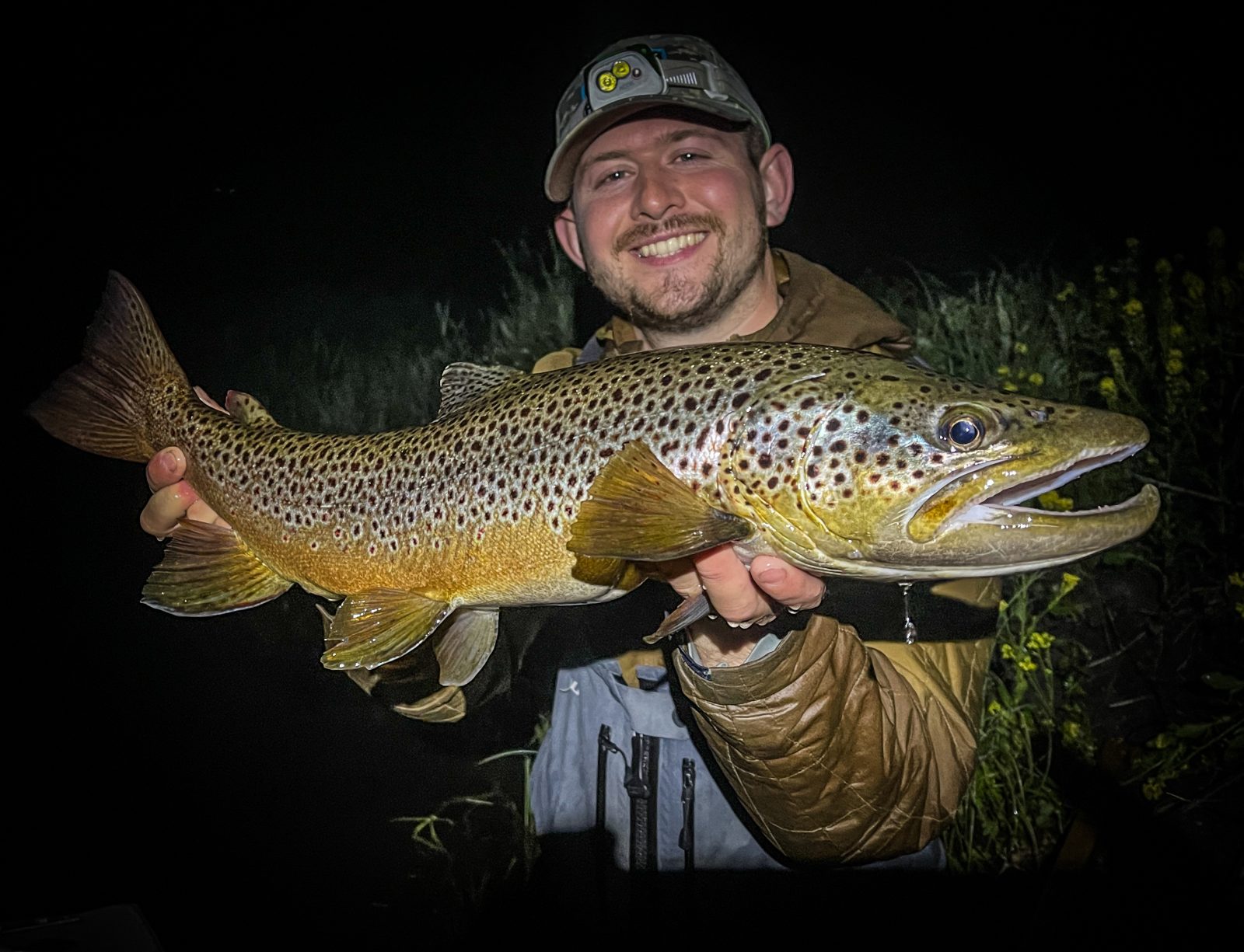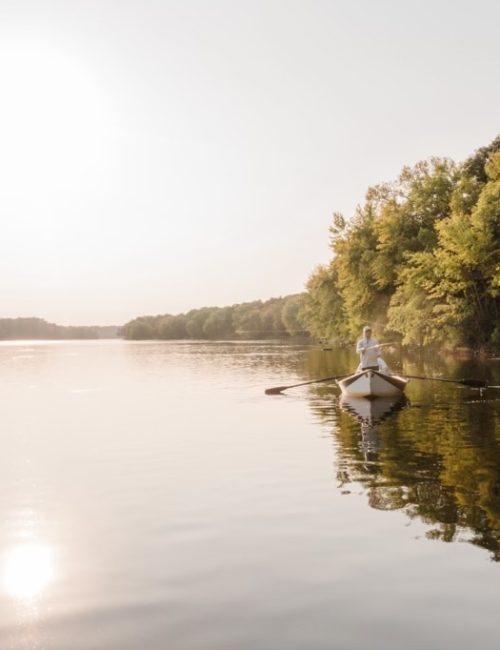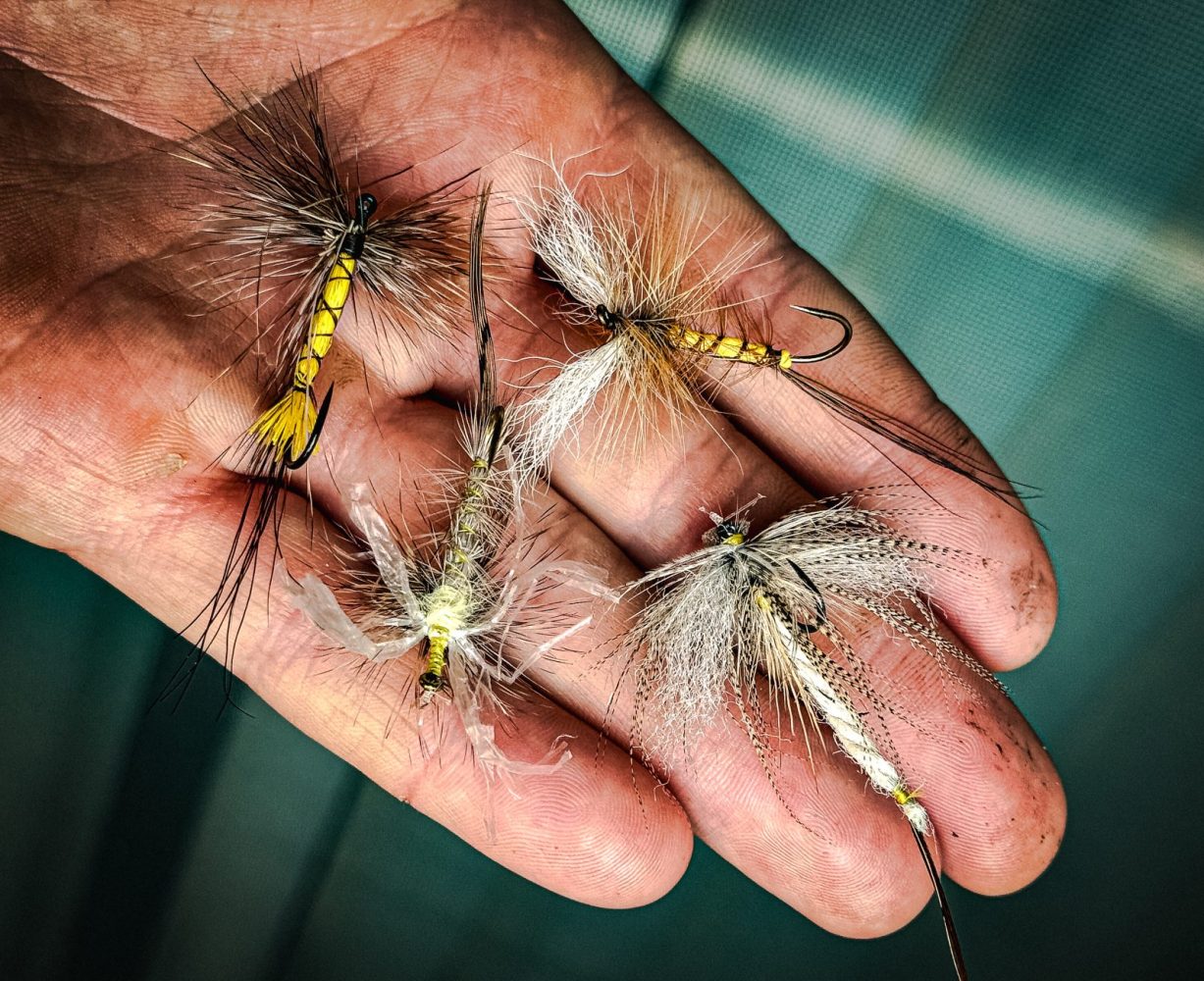
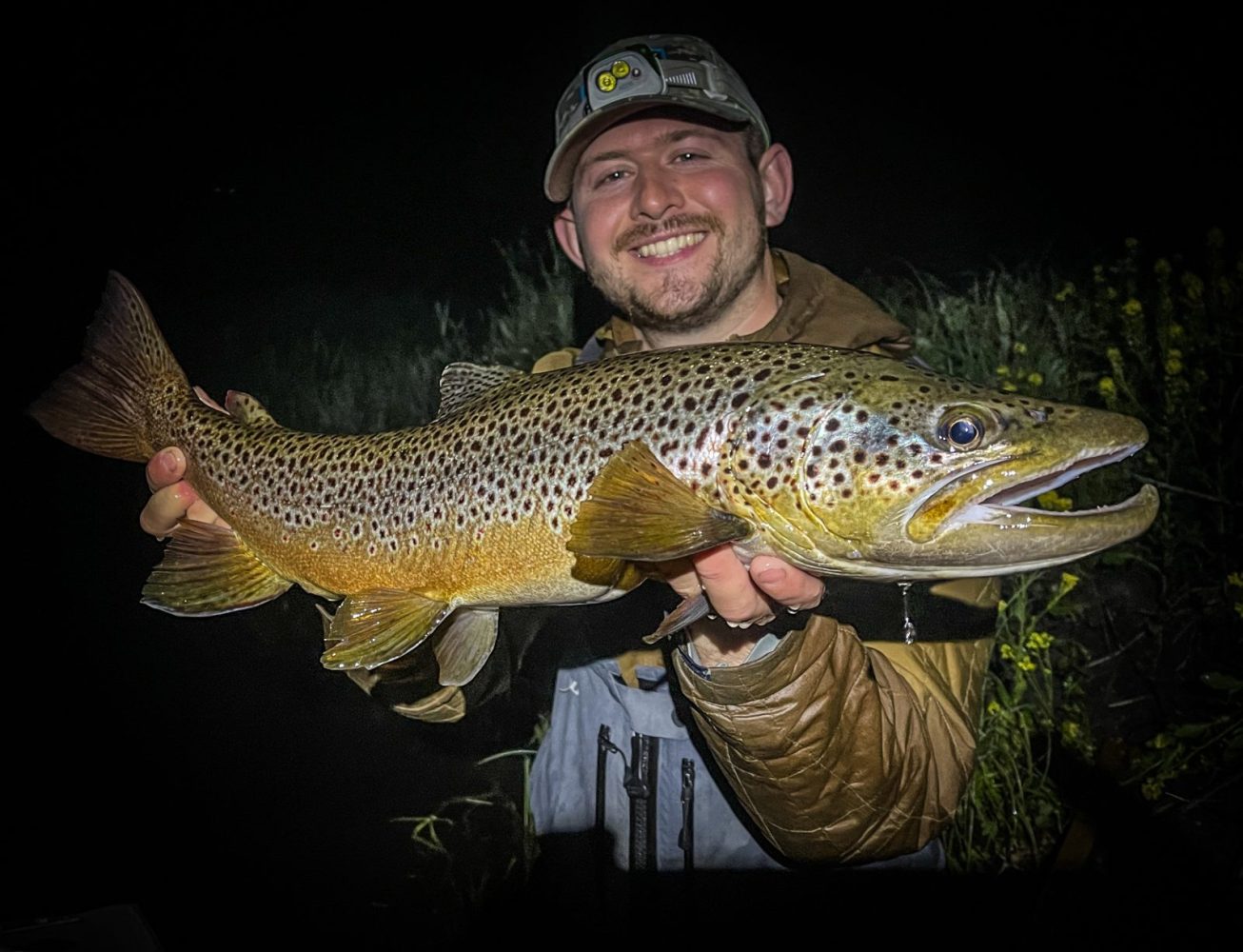
Michigan’s Hatches
Beginning in late April-early May, Michigan’s rivers experience some of the most prolific mayfly hatches in the Midwest. The days are long, plants are sprouting, and aquatic life is flourishing. This first big hatch of the spring begins with the size 14 Hendrickson. Despite being small, the Hendrickson kick-starts some of the most incredible fishing Michigan has to offer. Throughout the season, daytime fishing transitions to night. With water temperatures increasing and the majority of bug hatches and spinner falls occurring in the evenings and early morning hours, night offers exceptional fishing opportunities.
As light turns to darkness, we find ourselves awaiting hatches that progressively increase in size. With every major hatch, the pressure increases not only for the fish but also for the anglers. For some, glory finds them on the stream. For others, heartbreak drives their passion. Hoping for that next big opportunity at one of the giant fish gorging on the plethora of bugs. With each hatch, we lose sleep, the days become longer, and the bugs spin late into the night. The gradual progression of hatches in Michigan is Hendricksons, sulphurs, Cahills, stoneflies, gray drakes, brown drakes, and the grand finale, the hex.
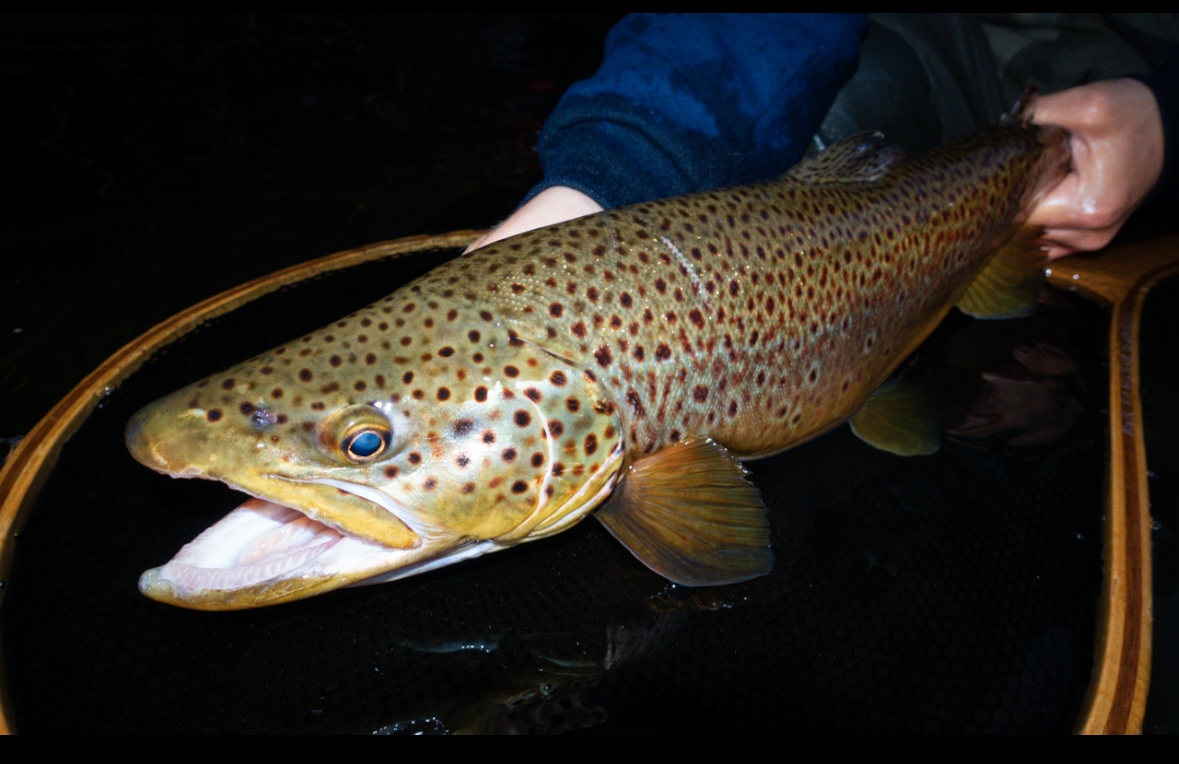
What is the “Hex”?
Hexagenia Limbata, also known as the “Giant Mayfly”, or “hex” for short, hatches in mid-June when we begin to see hot days and warm nights with air temperatures ranging from 70-80+ degrees. Higher air temperatures paired with intermittent moments of marginal water temperatures and prevalent thunderstorms make for the emergence of the hex–the largest mayfly in Michigan.
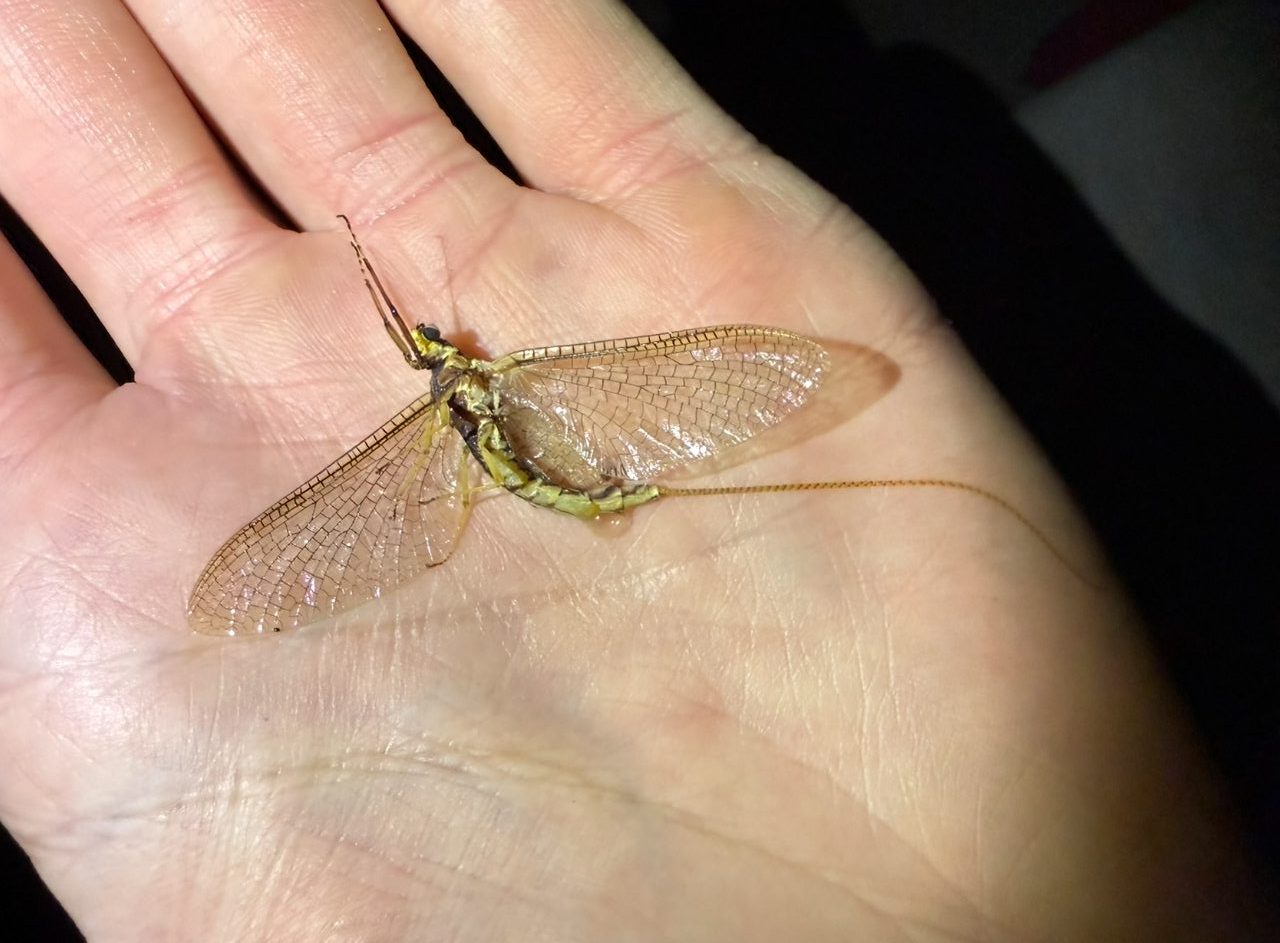
Anglers Come Alive During the Michigan Hex Hatch
The excitement is felt in communities near our beloved trout streams. Hotels are booked, fly shops are packed, and the sight of drift boats, kayaks, and cars full of fishing gear is prevalent. If you weren’t familiar with this hatch, anglers from afar would stress its importance. To put things in perspective, the 2nd largest mayfly we see is a size 8. Michigan hex mayflies range in size from a size 8, 2x long, to a size 4, 3x long. These bugs become one of the most vital food sources for trout, bass, and other species in preparation for a long summer. This hatch is an angler’s best chance at presenting to and potentially hooking a fish over 20 inches, if not much larger.)
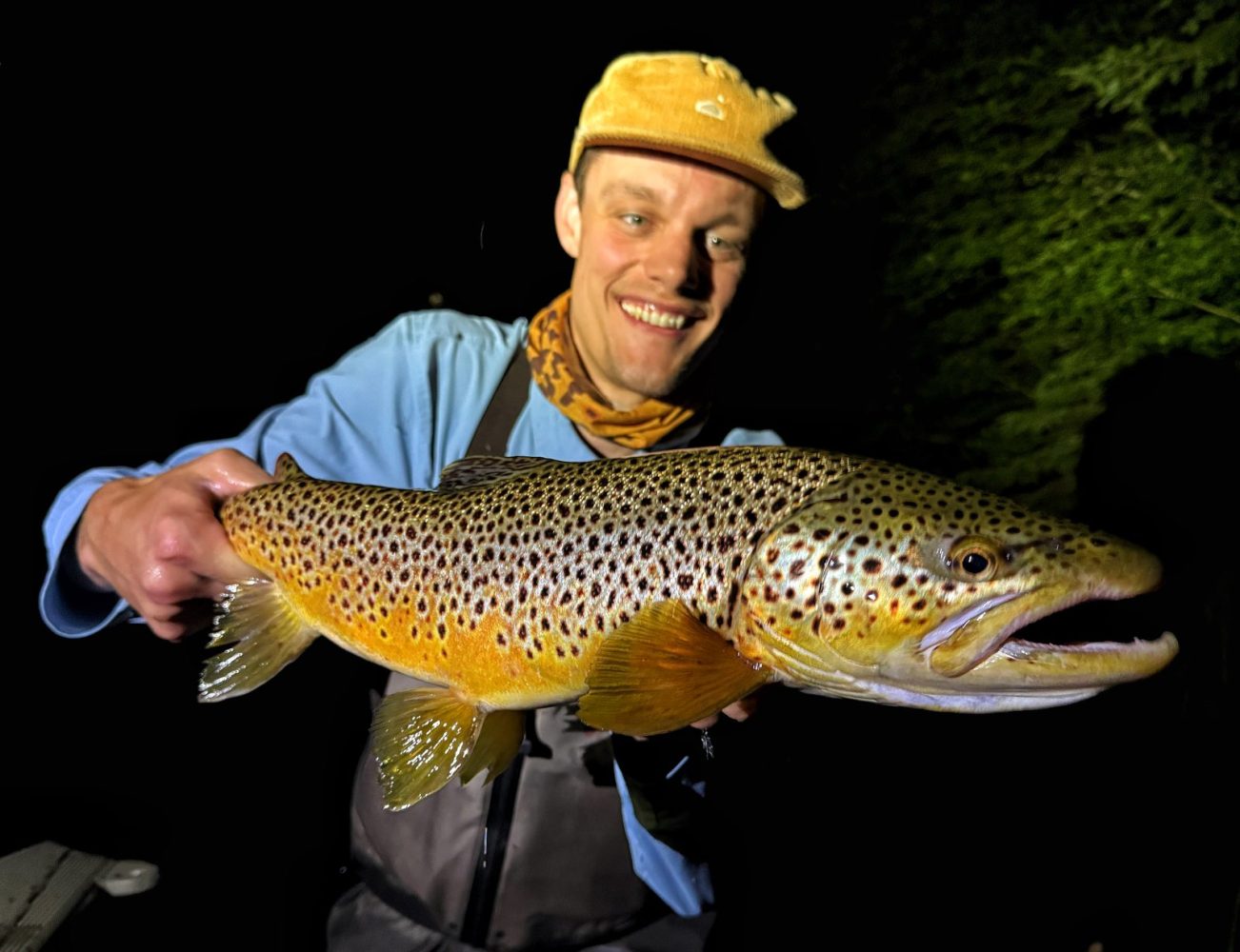
The Night of the Hatch
Preparation starts well before the sun sets. Flies are tied, gear is rigged, tippet is checked, and the planning begins. In good company, we talk amongst ourselves and reflect on our experiences and observations from times past.
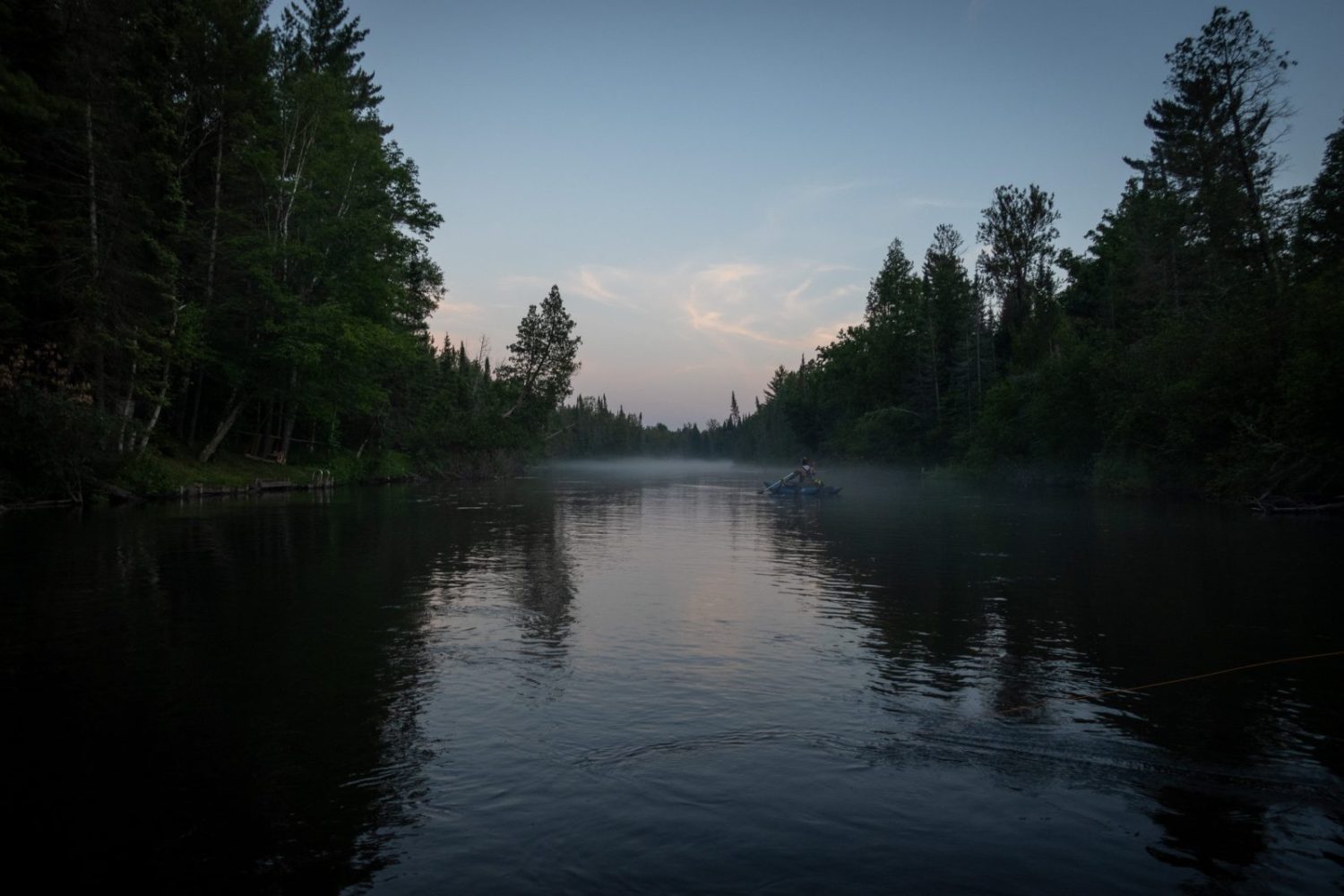
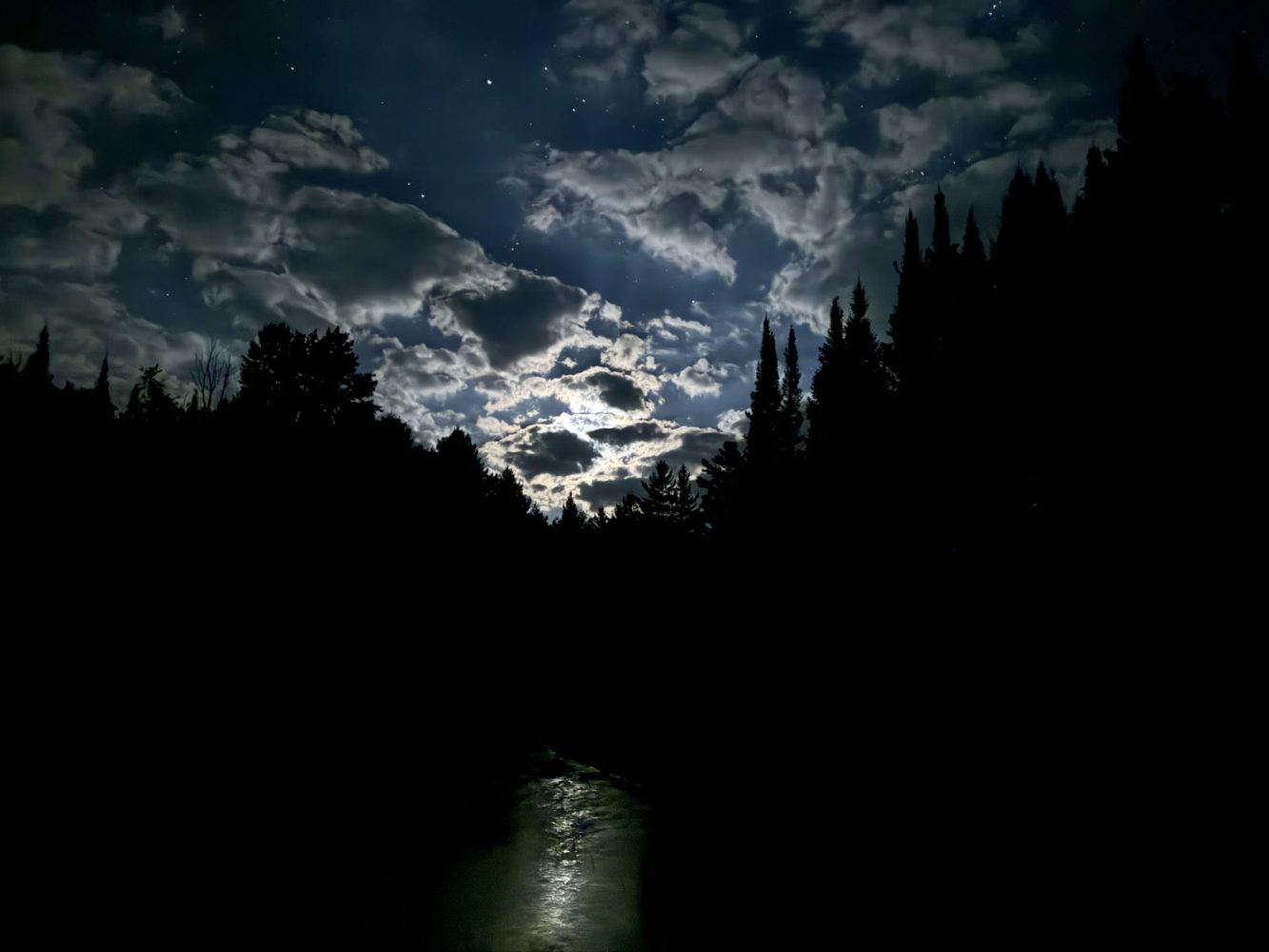
“How about this river? What if we did this float? Remember that big fish? This fly is the one.”
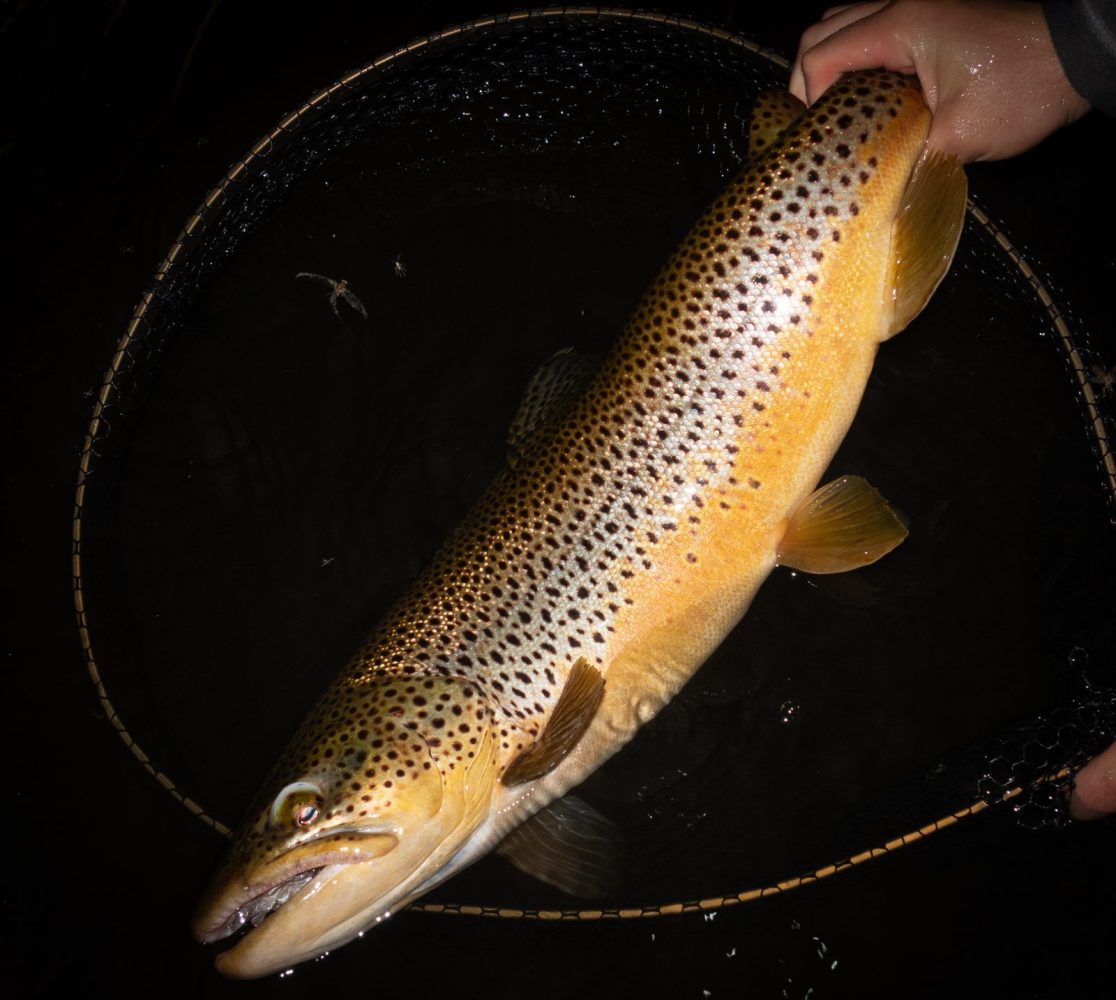
Fishing Michigan Hex Hatches: Rods, Lines, Leader, & Tippet
Rods: A 9’ 6-weight is the most versatile and allows you to fish smaller hatches but also be able to bury a size 4, 2x heavy hook. With water temps being 63-68 degrees it becomes incredibly important to be able to land fish fast. My favorite rod for Michigan hex fishing is the 9-foot 6-weight Diamondback Aeroflex fly rod.
Lines: I prefer a slightly more aggressive line, typically 1.5 sizes heavy. The 1.5 heavy forward taper helps turn over more air-resistant flies such as the large hex patterns we use. My favorite fly line is the Scientific Angler Infinity Taper in a size 6wt.
Leader: I recommend using a 7- to 10-foot leader, in 1x or 2x. Check out Masterclass Leaders.
Tippet Fulling Mill Masterclass Nylon tippet in 3x and 2x gets the job done. Before the hex Spinner Fall
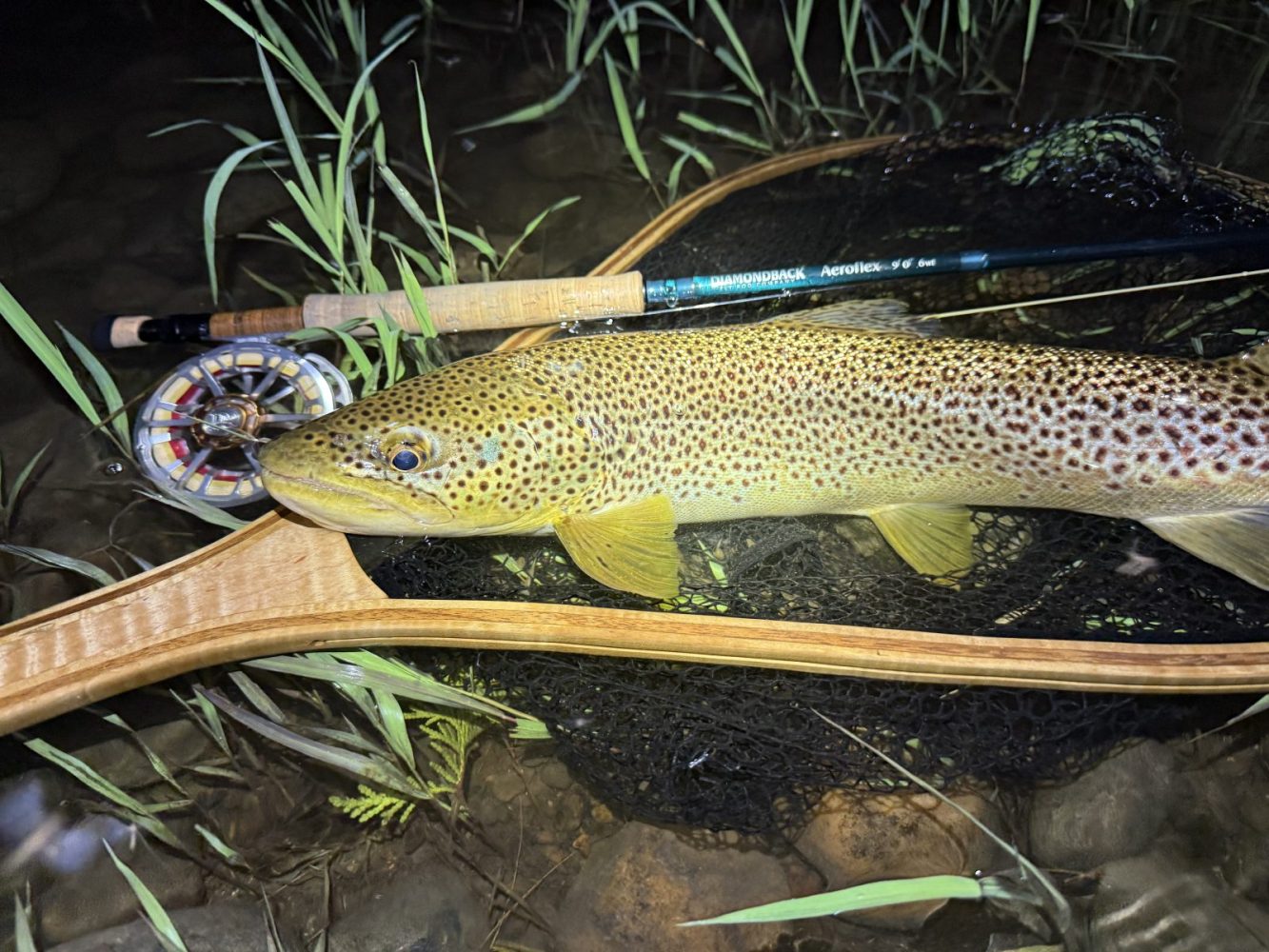
Getting on the Water
The drive to the river is almost always quiet, despite the tangible excitement and self-inflicted pressure. You pull into a boat launch packed with other anglers, back the boat in, and make sure you contact your car spotter before floating away. The night begins on anchor, picking a prime area where you can sit back, relax, and enjoy the company of your friends. As the evening progresses, Isonychia (size 10 pale/purple hues mayflies) start to come off, which often brings out some early feeding fish. Isonychia are a great food source for trout and offer anglers an opportunity to catch the first big fish before the hex makes an appearance. Hunting early rises can yield several nice fish for a skilled angler, so it pays off to arrive early!
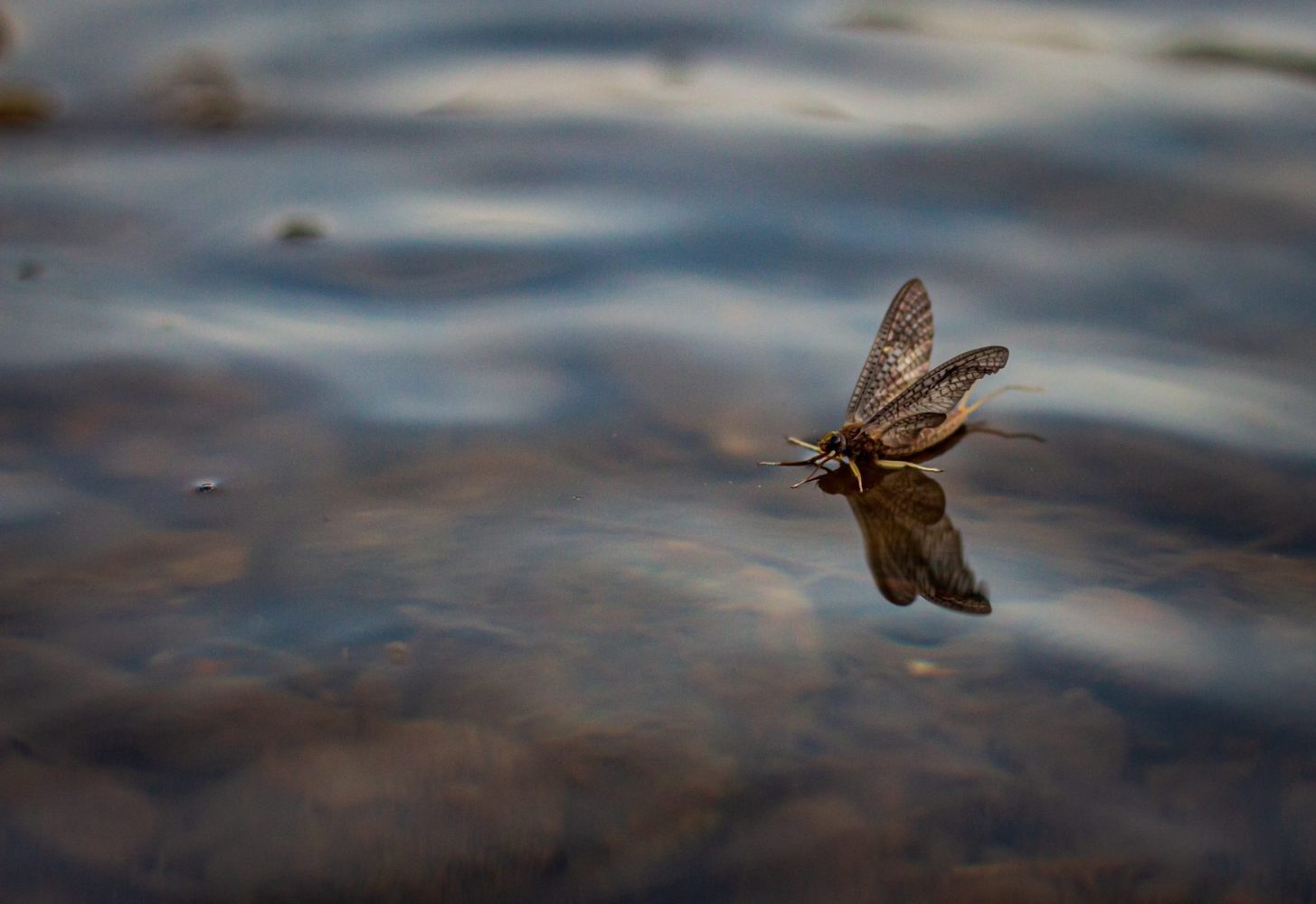
Timing the Hex Hatch
As the sun sets, the night comes alive. Whippoorwills sing, and the sound of night hawks bombing the river is an enchanting ambiance. There’s a lapse in fish feeding activity for a short period of time—many people attribute this to the brown trout’s eyes adjusting to the falling light. Around 10:45 PM, the silence is broken by the sound of a static buzz over the river. That sound is thousands of hexes flying upriver in preparation to mate and die. The steady hum is interrupted by large fish starting their feeding pattern by blowing up a handful of hex before settling into their rhythm. Anglers know, it’s time to hunt.
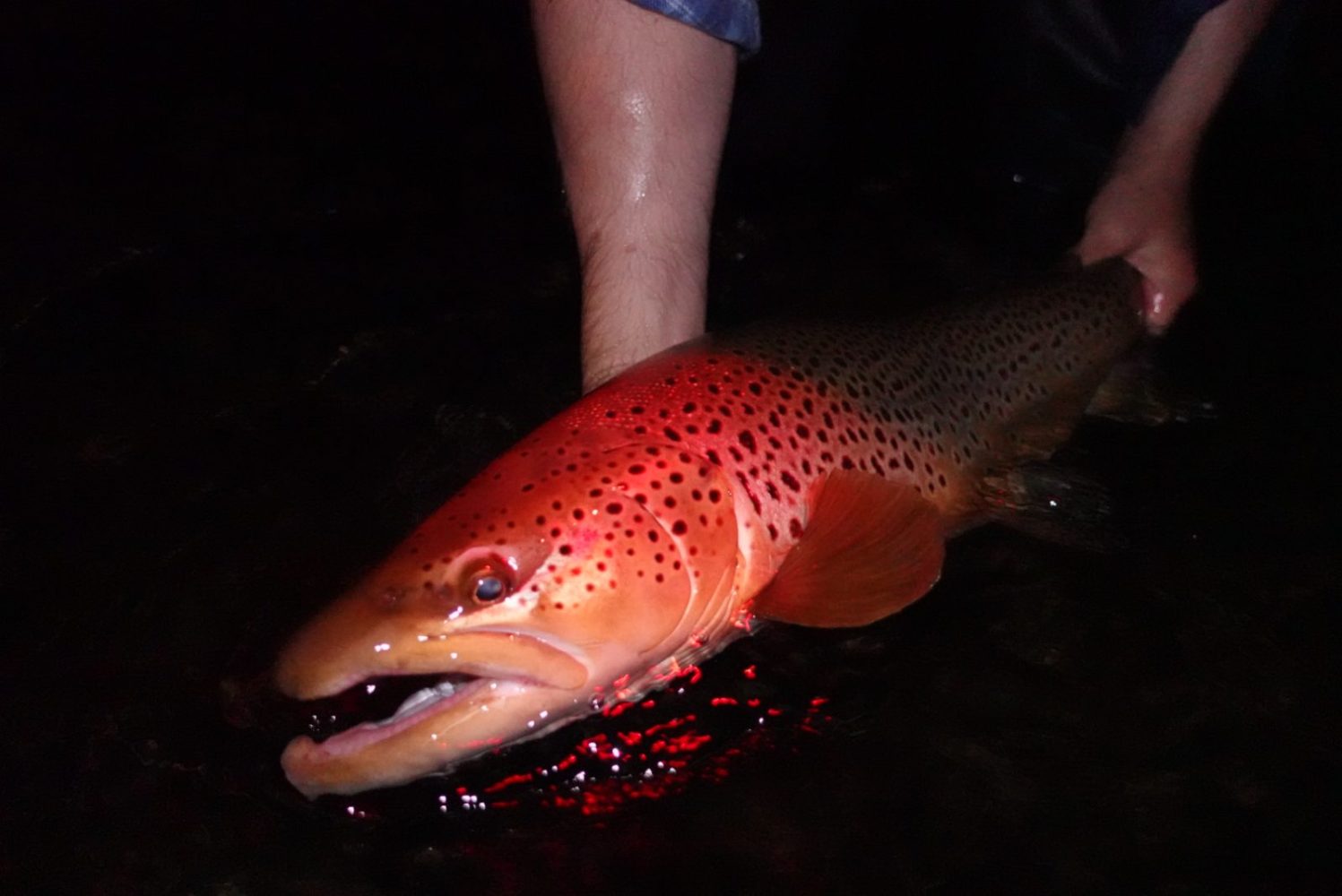
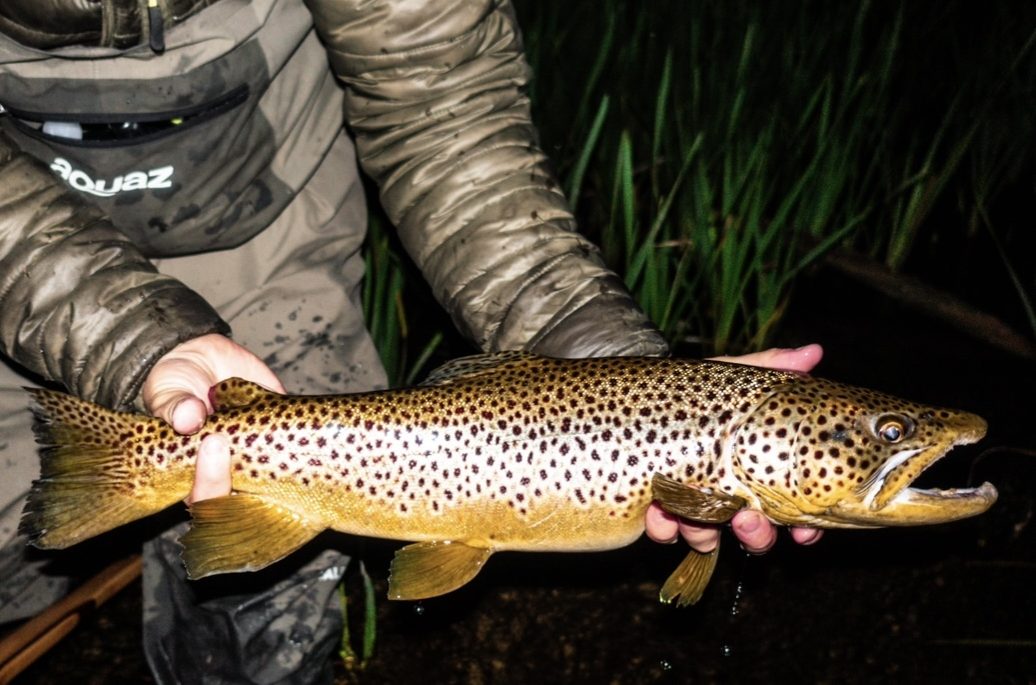
The Progression of the Hex Hatch
Throughout the night, anglers will encounter several different key moments as described below.
The Fall
The hex spinner fall, which takes place just after dark, primarily consists of spent “spinners”—dead mayflies. A spinner fall is when bugs that hatched 48 hours ago fly upriver, mate, then die on the water. These are incredibly exciting moments for an angler due to the volume of vulnerable bugs hitting the water. These are best imitated by a slightly higher riding hex pattern that will stand out within massive blankets of bugs.
The Wash Out
As the night continues, you enter the first wash out period. This is when the hex that fell begins to get waterlogged, sits very low in the water column, and often sinks. Patterns that sit low and often sink after a handful of casts really play a vital role at this point in the night.
Emergence
The emergence begins in the middle of the night on most nights when the air temperature has leveled out. This can be a prolific event following rain or thunderstorms, but more often is a trickle of bugs for fish who are still hungry enough to hunt the banks and begin to end up on the edges of swampy still waters. Emergers and duns are often the best patterns to use. Here’s a tip: after 1-3 AM, if the fish left rising are quiet when you come across a louder fish again… he’s probably eating emergers.
Daybreak
The last phase is the early morning wash out of leftover spinners and the remainder of emergers that hatch just as the sun begins to rise. How late this continues is directly influenced by weather and hatch progression. The fish become incredibly spooky in the presence of daylight. Trout can see the fly incredibly well, and the downside of big flies is that fish can see them better. Having a realistic-looking, hatch-matching bug becomes a high priority. Bugs that sit low in the water film, smaller appearance, good color blends of browns and yellow, smaller hooks, and 4x tippet become the name of the game. With morning fishing being primarily a trickle emergence and washed out spinners, patience becomes key. The fish are full and extremely picky. Row quietly and try to be stealthy when dropping your anchor to set up on fish.
Tips to Be More Successful Fishing the Michigan Hex Hatch
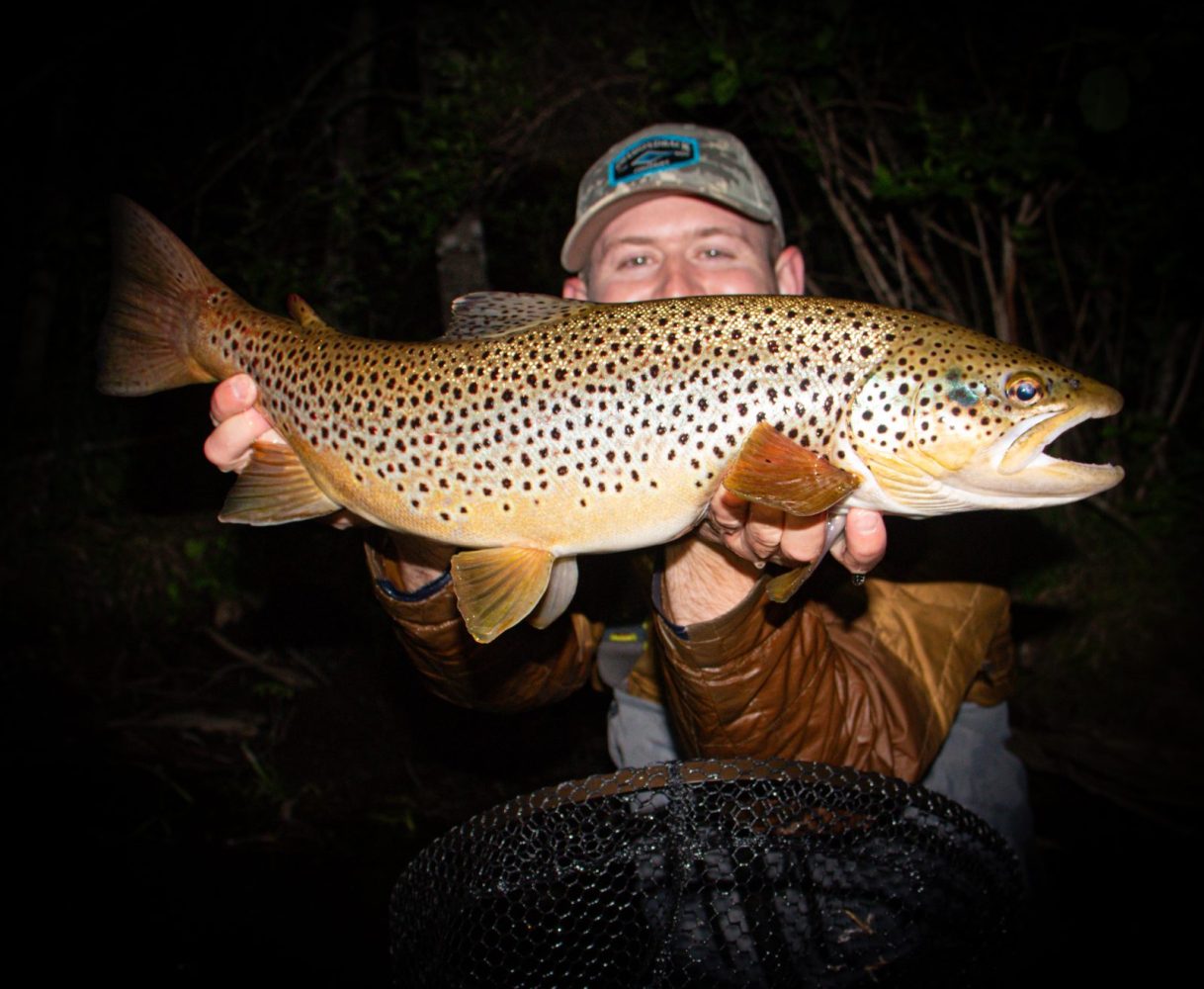
Learning to night fish can be daunting, so I’ve compiled some common questions and answered them below.
What kind of water to fish?
The hex is a mud borrowing bug, so it’s important to focus on relatively deep muddy rivers with varying depth and structure. Not only are these areas more suitable for hex mayflies, but deep water with wood is a recipe for big fish.
How long should I wait in a spot before moving?
A rule of thumb is on a warm summer night, hex usually “spin” around 10:45 PM. Once bugs have fallen, I usually wait until a fair amount of the hex stops quivering on the surface before I decide if there most likely is not a feeding fish in the area I chose to wade in on before continuing upriver or downriver if I’m on foot.
How late should I fish?
Out of a boat, the answer is as long as you can find a rising fish. Some of my biggest fish come late in the night as hex begin to wash out or as more bugs begin to hatch around 2-3 am. Once the night becomes cold and fog arises, I will hunt my way to my get out but often that signals a near end to the night
When to set the hook?
Knowing when a fish eats my fly is a combination of muscle memory and knowing I put the fly where I wanted it to be. I estimate where my bug is in the drift based on how far I lead or cast above the fish, how fast the water is, and the dynamics of the current. After years of night fishing, you begin to hear how far it went. The friction of the line going through the rod is something I listen for, which allows me to not only tell how far I cast but how far someone else is casting in my boat. If there is any moonlight, I can often see where my fly lands and watch my drift to the fish.
Hook sets are free, and I will always set if a fish rises and I believe my fly is close to the sound of a fish rising. Sometimes it will spook fish, but a fast snap of the rod directly upwards towards the sky allows me to snap the fly off the water film. Don’t set hard, set fast. I set to tight tension and then once I know a fish is hooked, I engage the rest of the rod’s action.
Is it me or my bug?
It’s always a difficult decision to decide am I not catching this fish because of my drift or because of how picky these fish can be when Michigan hex fishing. A good rule of thumb, if a fish is consistently rising and you switch through 3 different patterns without an eat and several drifts with that fly, In my head I believe the issue is my drift rather than my bug. Especially if a fish is confidently rising and after my first cast becomes sporadic or moving, that is a big indicator of a bad drift. Move, change your angler, tippet length, whatever you believe to be the root cause.
How to access the river for Michigan Hex fishing?
The easiest way to get into the Michigan hex hatch is wade-in fishing especially if you aren’t an experienced rower at night. Wading allows you to get close and focus on catching fish. I recommend looking for deep woody areas with plenty of varying depth. If you own a boat, riffles above deep water are an excellent area to anchor awaiting a spinner fall. Fish love changes in current speed which help them get more food without expending more energy. The bugs tend to spin at heads of rifles adding another key advantage early in the night.
River etiquette: how to navigate with other boats sharing the same water?
Safety is number one priority for not only you but for other anglers. Making sure you know your limitations in terms of rowing skill and experience. Rowing at night comes with many challenges and obstacles normally easily seen in the day time may be difficult at night. It’s important to be comfortable fishing without any aid of a light or a dim red light which helps increase outlines of harder to see timber. While rowing down the river, if you hear a voice or see an outline of a boat, I always ask “can you give me a red light?” This allows me to have a clear target for where another person’s vessel is when coming up on another boat.
The next thing I ask is, “Looking downriver, do you want me to pass on river left or right,” or “North or South side of the river?”. This is especially important if that person is anchored fishing to a rising trout. When I pass a boat, even if a big fish is rising below them, I like giving an angler at least 100- 200 yards of water, depending on the size of the river. Before dropping anchor on the next fish, unless I specifically ask if they care if I fish for a fish in close range of them. These basic tips will not only help increase your success on the water but also improve the quality of another angler’s trip.
Tying Hex Flies
Fulling Mill provides a wide range of materials to tie a hex fly, and some materials you should consider tying hex flies with are listed below!
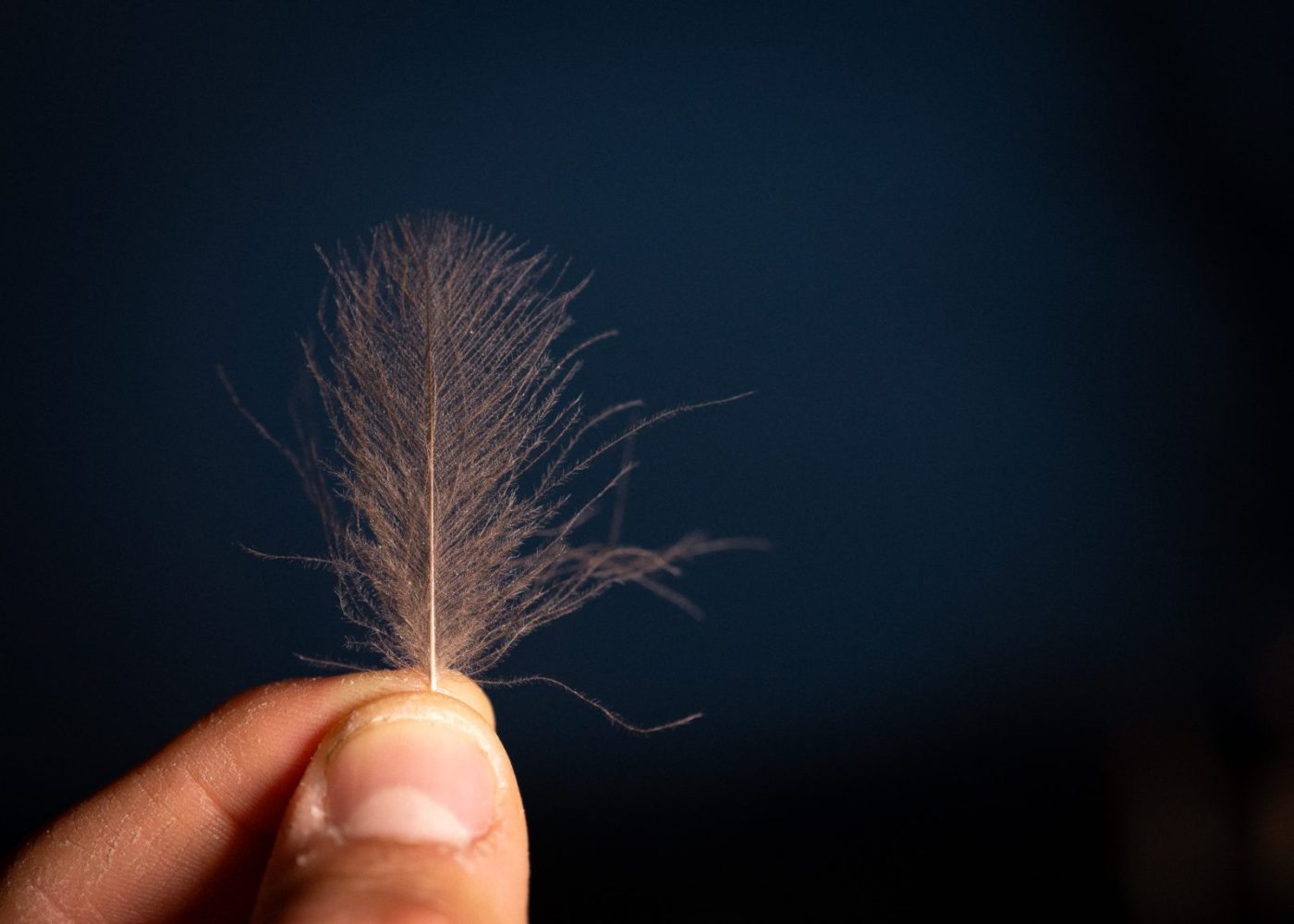

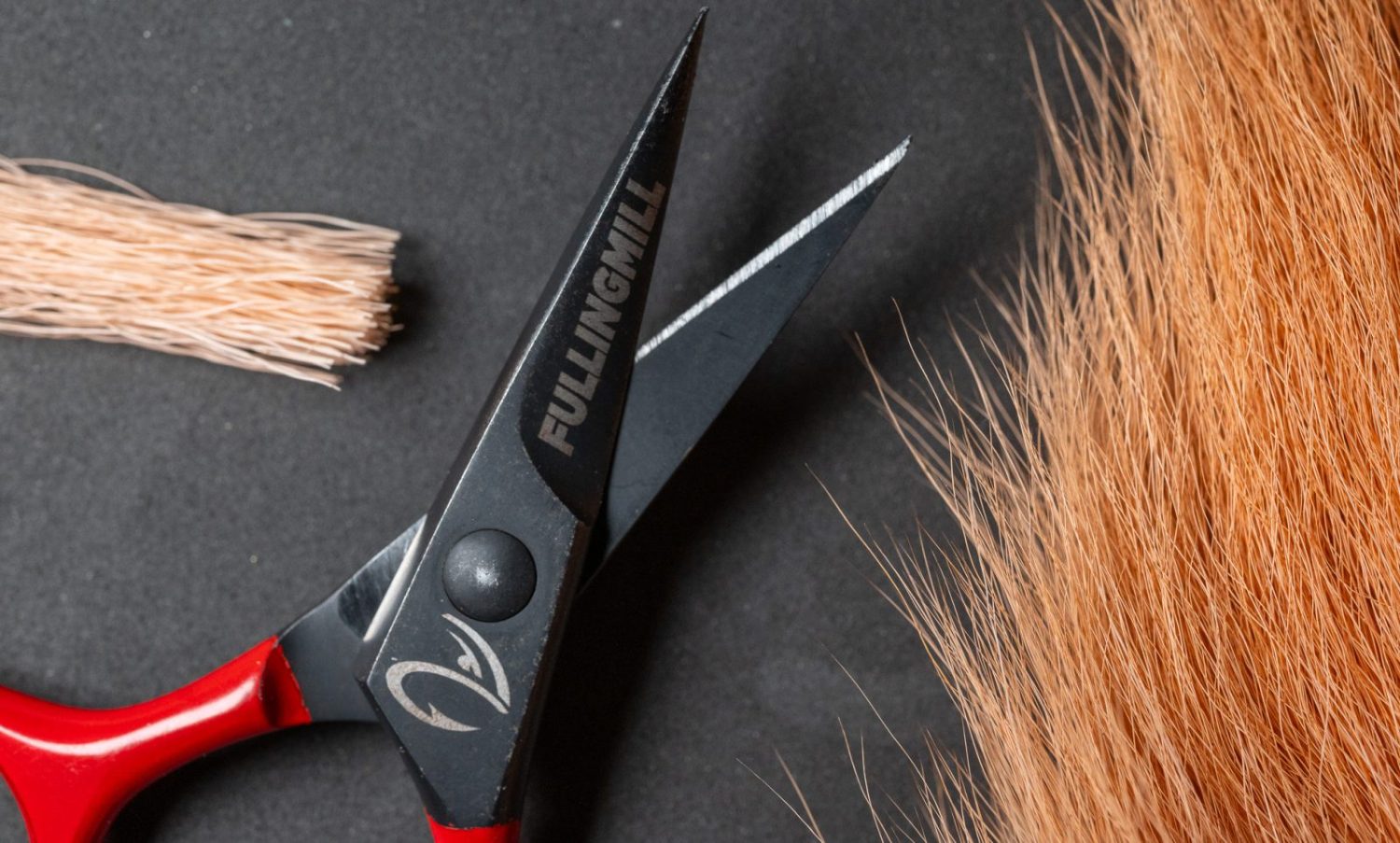
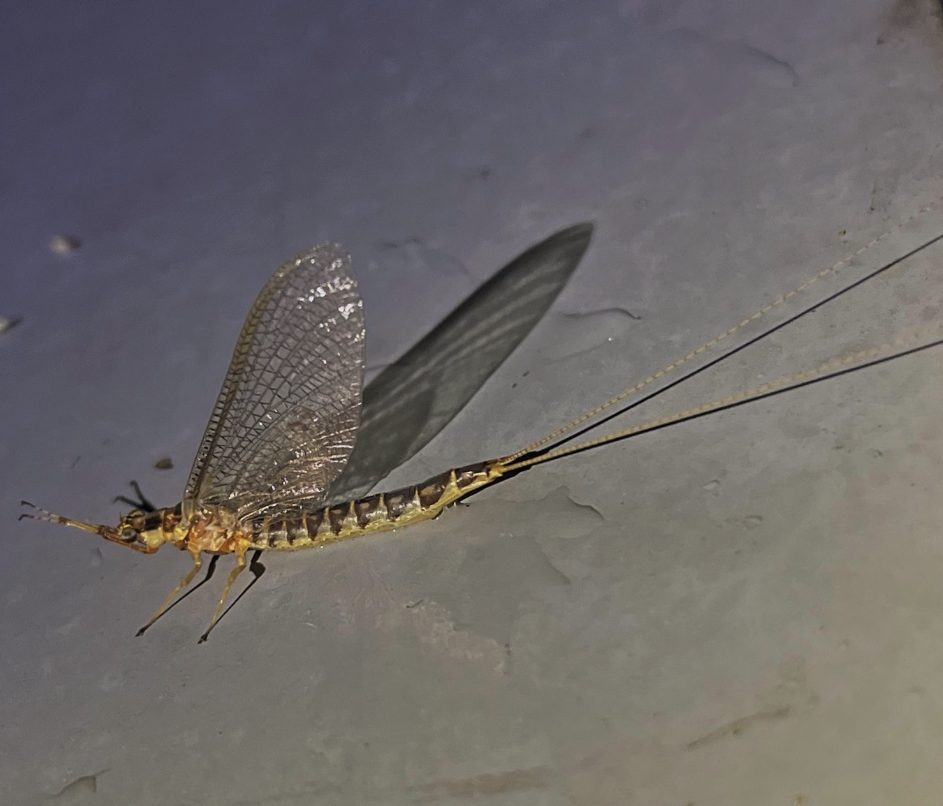

Hooks Selection
The right hook makes a big difference. When it comes to fishing hex flies, you need a dependable hook. Not only do you need the space to tie a large fly, but also need durability to hold big fish. I recommend using a size 6-4 hook, 2x heavy. Consider putting the following hooks to use when tying hex patterns!

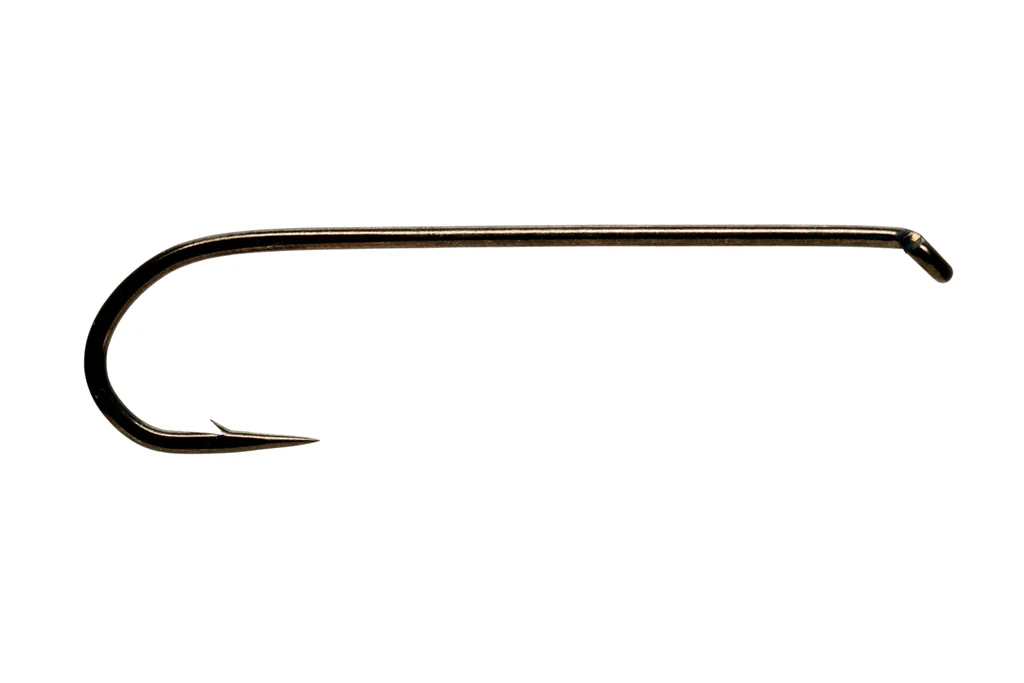
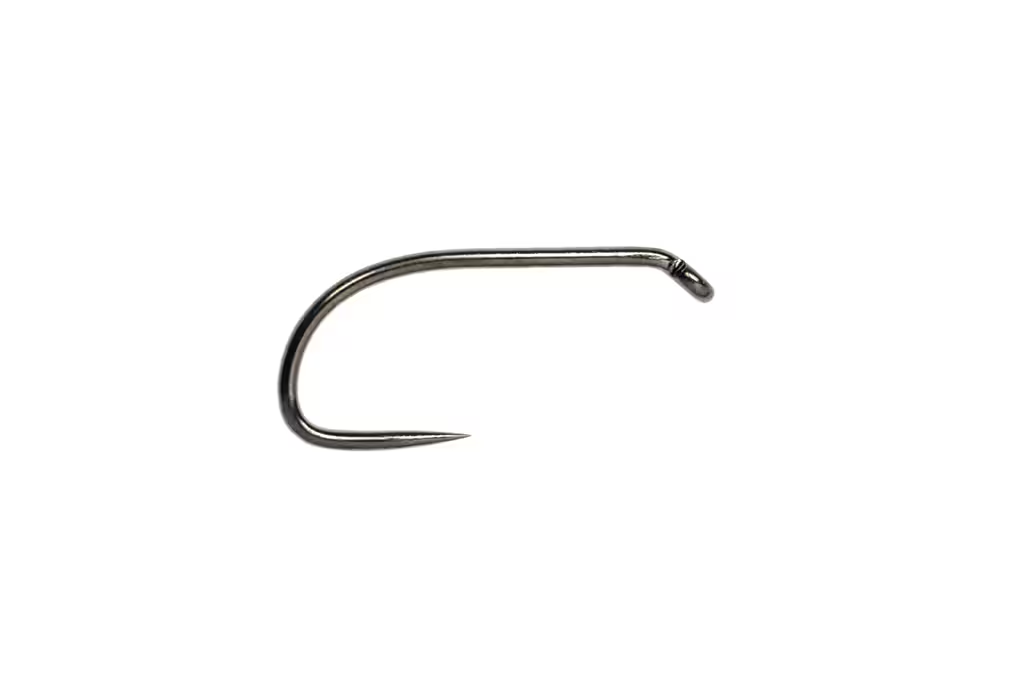
Pro Thread Flat, Twisted & Floss
When tying hex flies, choose a size and color that not only offers strength, but also complements your pattern. Hex mayflies have a light tan/yellow coloration, so choose a thread within that color scheme or consider selecting a thread color with contrast, like brown, to create bolder segmentation. Check out the new Pro Thread—offered in a range of deniers, colors to suit your tying needs!

Fulling Mill Dubbing
Choose from the wide range of Fulling Mill dubbings when preparing for hex hatches. Whether you want a fully natural dubbing or a natural/synthetic blend, there is a range of offerings and color shades that are perfect for tying a hex pattern.
Fulling Mill Foam Products
Bug Foam, Foam Cylinders, and Booby Cylinders are versatile foam materials that can be used to add buoyancy to patterns and build dry fly bodies. Offered in an array of colors, consider putting some of these foam products to use for tying hex flies!
Wing Materials: Ultra Dry Yarn & Parapost Yarn
To create super realistic wings for hex flies and other dry fly patterns, check out this video where Signature Tyer Jack Arnot combines multiple colors of Ultra Dry Yarn and Parapost Yarn. Jack demonstrates layering wing material in his New Age Caddis tying tutorial as well. Worth a watch for any fly tyer dedicated to matching hatches and looking to improve on their dry fly tying skills!
Premium Selected CDC Feathers & CDC Dubbing
Try using CDC feathers in pale yellow, light dun or natural gray to give the fly an added life like appearance in slow water. The new CDC Dubbing makes finishing flies with CDC even easier!
Premium Selected Deer Belly & Bucktail
Deer hair is a timeless material with versatile applications. From streamers to extended body dry flies like Hexes and Drakes, considering putting some of the premium selected Deer Belly & Bucktail to use.
